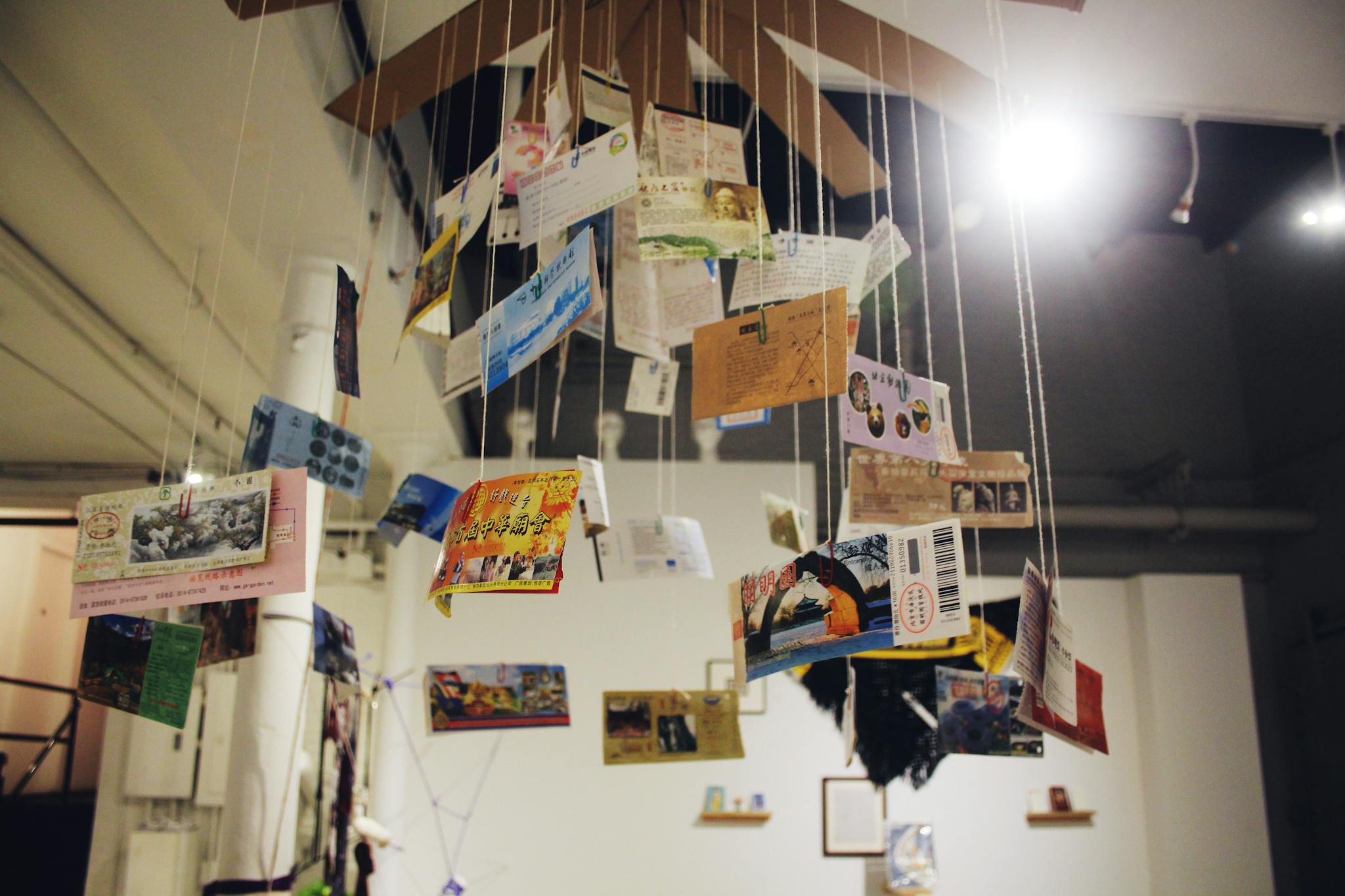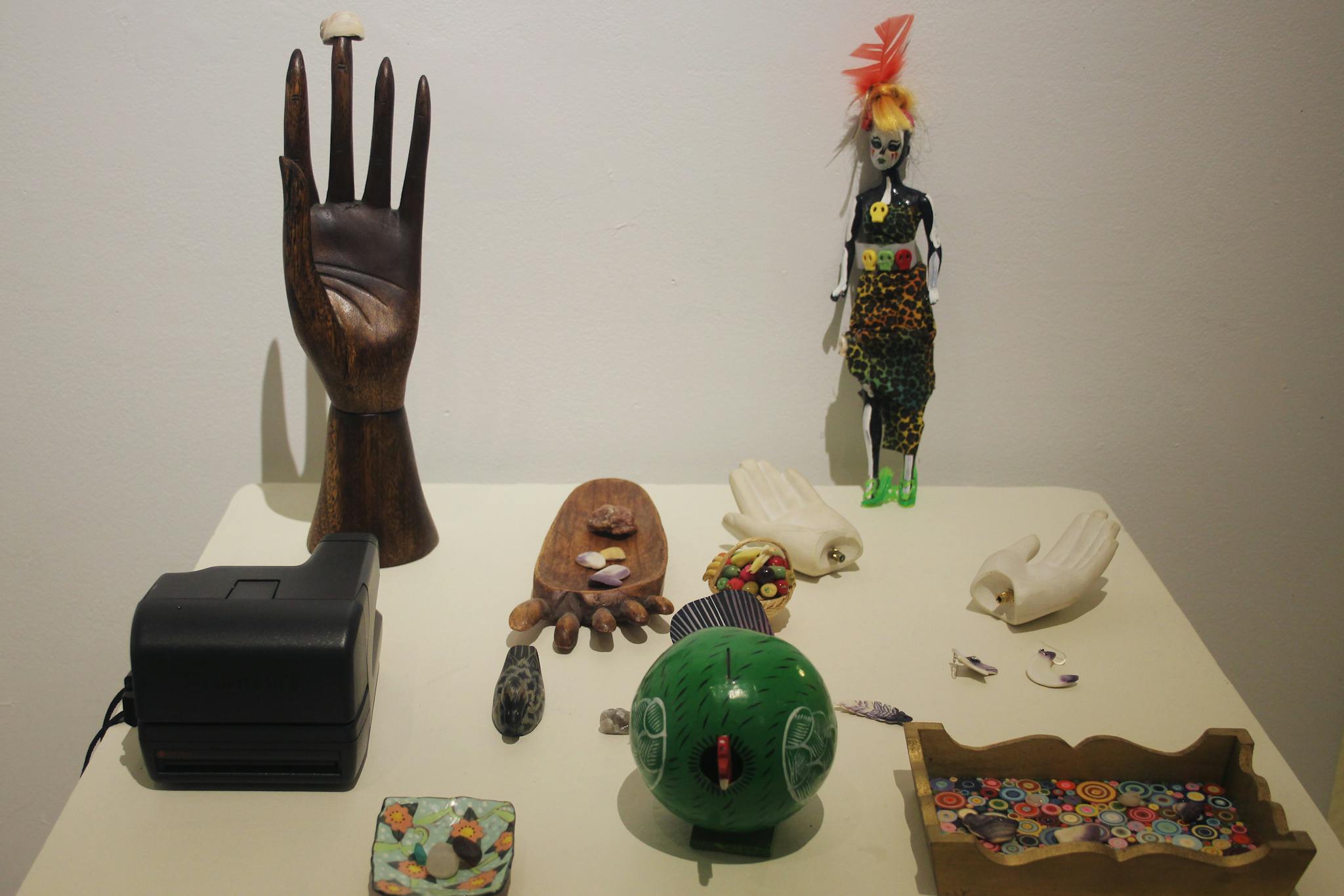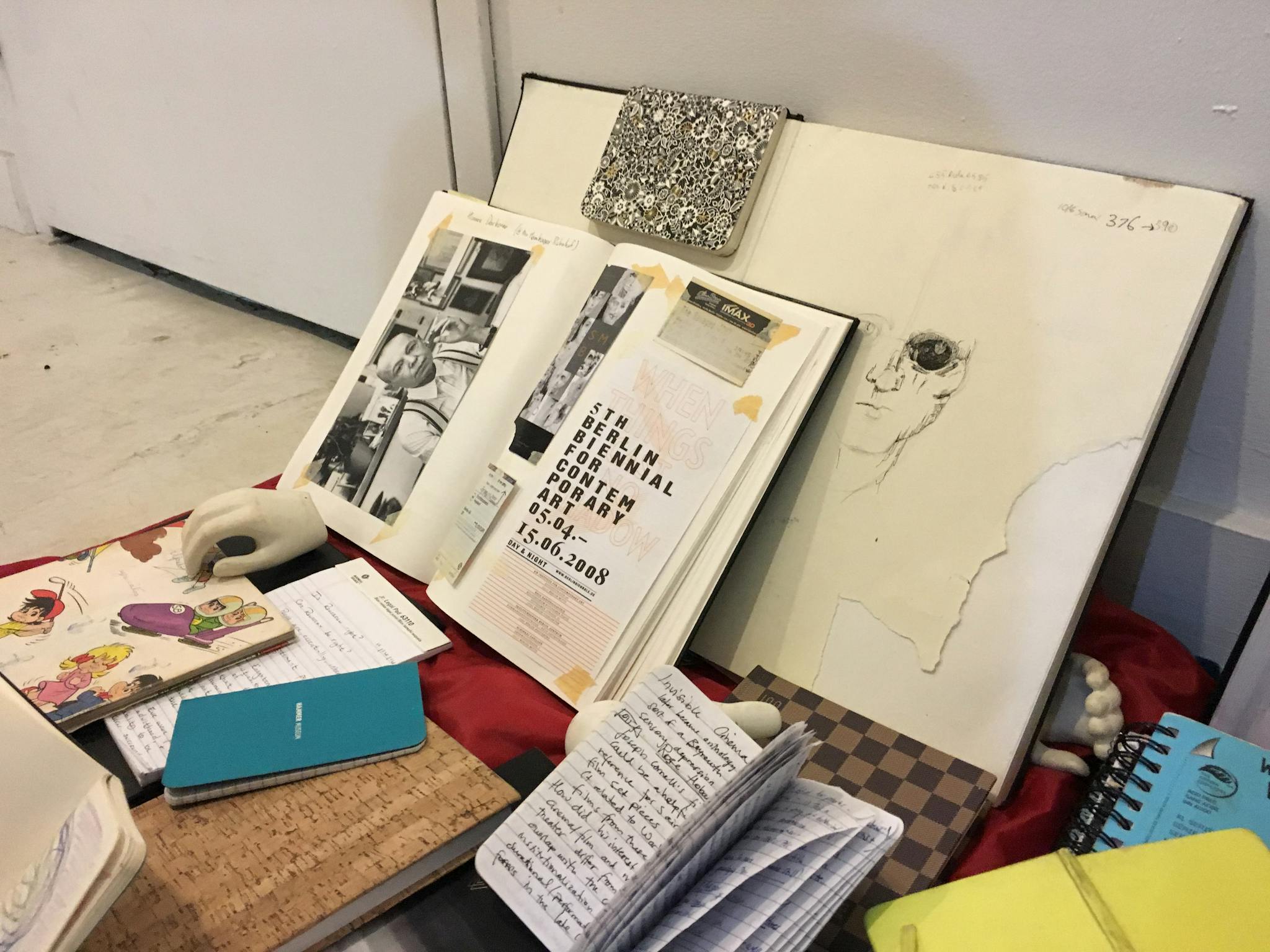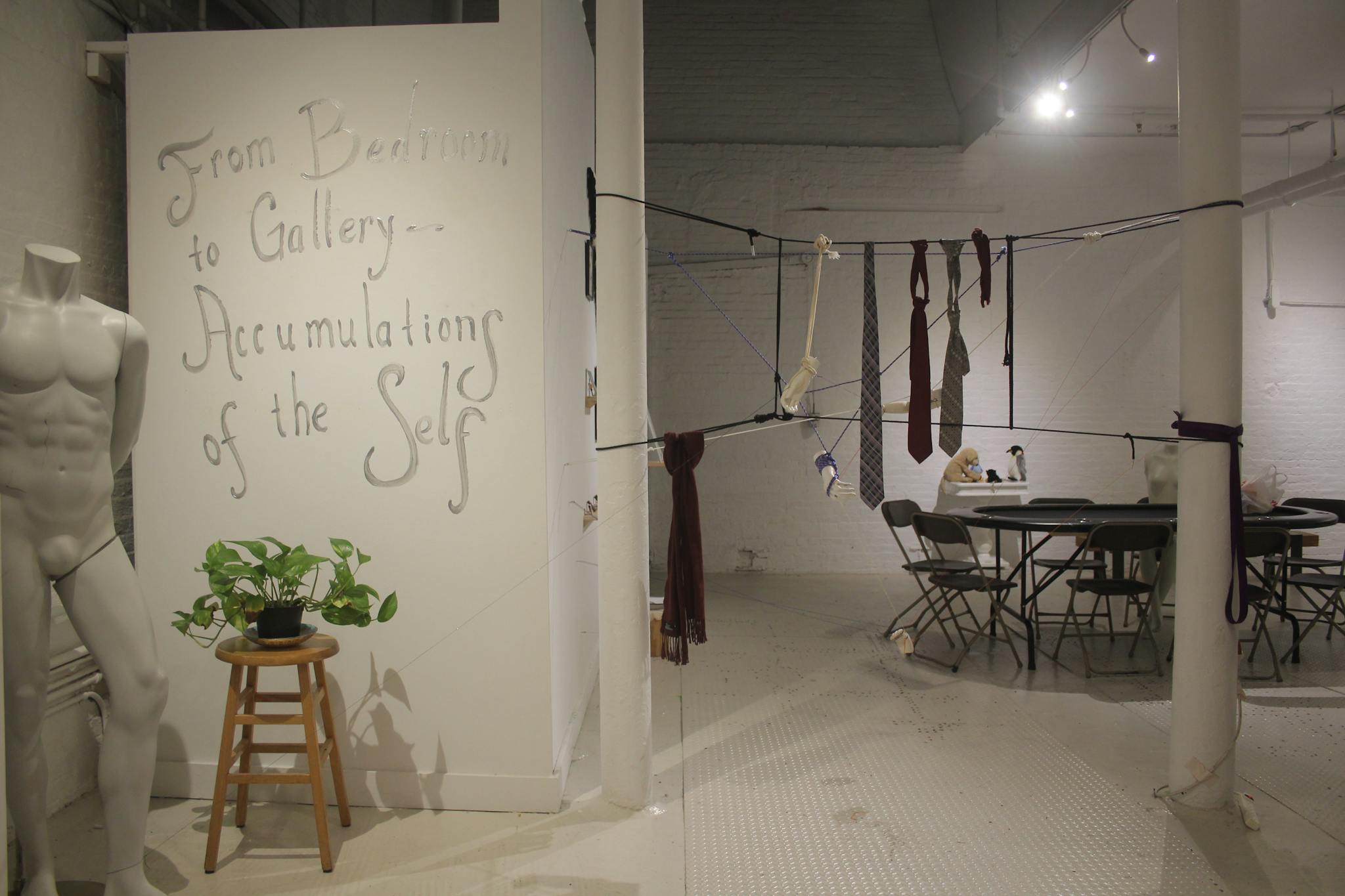At the Distillery Gallery in South Boston, artists from Northeastern University’s Contemporary Visual Culture class presented “From Bedroom to Gallery–Accumulations of the Self” for one night, and one night only. The poorly lit street that guarded the gallery was devoid of signs of life, but one step inside revealed a frenetic, open, and bright studio space sprawling with people. Throughout the gallery, artists displayed collections of various personal objects in miniature, diorama-like displays. Visitors gathered around a table to pour themselves drinks, exchanged greetings with their friends, and leisurely made their way through the exhibit, only stopping the conversation to interact with the installations. The curiosity and energy in the room were palpable.
The exhibition was inspired by a study of the concept of thewunderkammer. In Renaissance Europe, these cabinets of curiosities were vessels of opulence, used to compile fascinating and peculiar objects their owners acquired. The artists who exhibited in “Bedroom to Gallery” were tasked with developing their own twist on awunderkammerby putting their personal objects of fascination, importance, or personal influence on display for visitors to witness and interact with.
Upon entering the space, one was greeted by a stark white mannequin whose ominous masculine presence was juxtaposed by the houseplant beside it. The mannequin came from Hannah Groudas’ personal collection of figures. Beside it, guests were encouraged to grab a copy of a zine that served as the gallery guide. Each artist submitted a page to further explain their work or to facilitate interaction with a piece.
Delicately hanging in the middle of the gallery was a collection of admission tickets arranged as dangling sculpture. Hanging just low enough to brush the top of your brow, viewers moved through the piece as a kind of “rite of passage” through the gallery space. Styled similarly to a child’s mobile, artist Amy Liu’s FINDused the tickets to serve as small vignettes into Liu’s life. The collection of tickets in the sculpture began when she was six years old. “My family loves to travel so it has felt like I have been on my way to somewhere else my whole life,” she said. “[The tickets] reflect the trajectory of my own growth and development.”
Paper goods like tickets can mark our literal journeys, but other goods like notebooks, posters, letters, and postcards can serve to document who we are on that journey at any given point in time. These mementos are what artist Youssef Elbehri sought to highlight in his piece,“My Multidisciplinary Collection of Paper”. The eclectic installation, composed of everything from business cards to old drawings, highlighted his personality and history in full. The juxtaposition of all his different items – from a high school sketchbook to his current professional resume – was a testament to the challenge we face when curating our professional persona while honoring our passions, desires, or past selves.
Other artists used objects to commemorate relationships in both the past and present. In his exhibit Bacalhau, dedicated to his grandfather, Fredo Conde displayed items both belonging to his grandfather, as well as his own personal items that related it his grandfather’s profession as a fisherman. Despite his grandfather’s uncommon profession, Fredo’s ownership of such objects emphasized the significance of family and relationships in informing what we own – or, in other words, how we accumulate ourselves.
Shifting from a personal reflection, Bethany Wong brought a community-wide collection of objects to her exhibit, “Strangers Tell Me, Strangers Trust Me”. Her wunderkammerconsisted of a display of objects she has been given in exchange for stick and poke tattoos. From drawings to t-shirts to postcards. While living in Helsinki, Finland, she found that it was difficult to meet people organically and began tattooing strangers in exchange for stories and objects. She intended to test the limits of what people were willing to share with a stranger, both physically with her art on their bodies and emotionally with their stories. This disarming process enabled her to cultivate very special relationships with these strangers-turned-friends – many of whom she still keeps in touch with. With her installation, she demonstrated the power that objects have in cultivating and, in her case, initiating, beautiful and profound friendships.
It’s not uncommon for humans to slightly rearrange their spaces when they feel like their lives are getting stagnant; this phenomenon is what artist Zoe Wong explored with her installation Impulse + Movement.She encouraged others to completely rearrange items from her bedroom, ranging from tiny purple rocks to elaborately carved wooden hands, in whatever way they saw fit. She also provided a Polaroid camera to document the different states of the exhibit as well as to capture “someone or something [the viewer] loved”. By the end of the night, the wall was predominantly decorated with pictures of viewers – friends posing together, unflattering close-ups, people interacting with other exhibits. These moments in time would not have existed had Zoe not provided her items as a catalyst for their happening; in doing so, Wong gave proof that items can not only tell stories but also have a hand in authoring them.
Away from the commotion of the main gallery a corner of the floor was covered with several notebooks and journals. Joel Fierschnaller’s Collective Pages invited audiences to enter the journals of several artists. He displayed his classmate’s journals as artifacts which were to be interacted with. Despite their typical treatment as intensely personal items, viewers were encouraged to flip through the pages. The notebooks contained the artists’ record of their thoughts, ideas, tasks, and visions – in some, poems and grocery lists coexisted on the same page. There’s something about handwriting on soft pages that really helps you get to know a person.
In the deeply visual and digital culture we live in, we have created sites, feeds, and pages to act as representations of ourselves. Shifting from representations of the self, Accumulations of the Self revealed the deeply intimate nature of items as modes of personal communication and human understanding.





